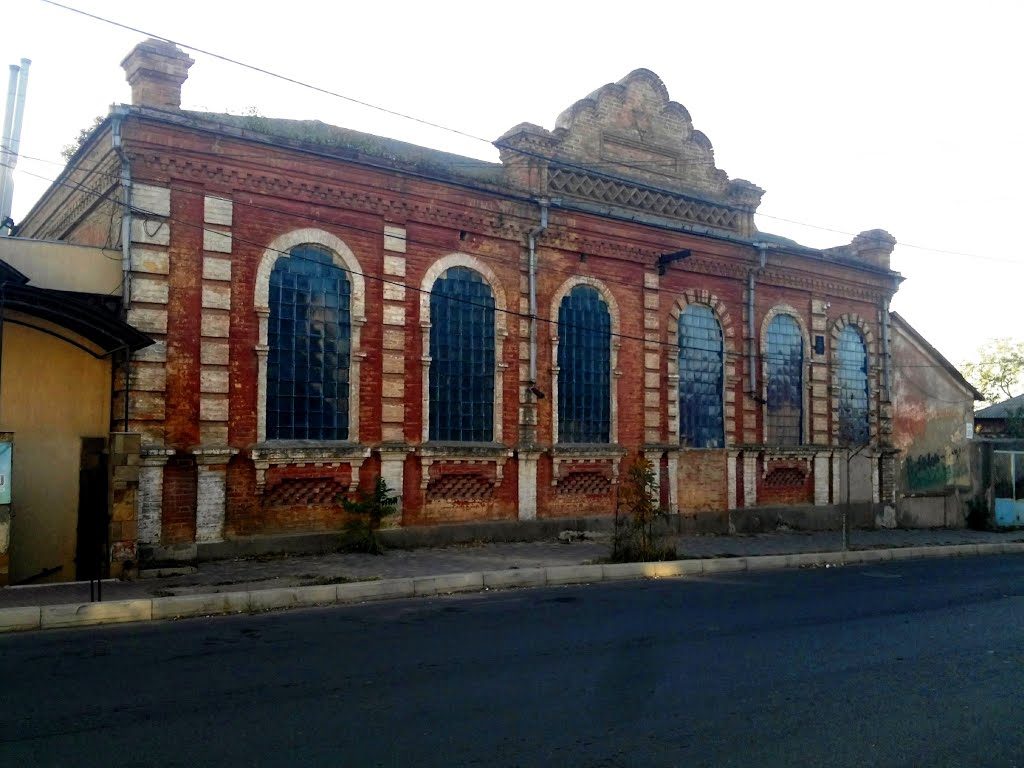
The terrifying war against Ukraine changes, of course, the function of these pages devoted to the Jewish cultural heritage of that country. Many of the places mentioned were razed to the ground by bombs. While these pages are not intended in the present time for tourism, they may be useful to researchers and students as historical references. References to so many painful histories during the pogroms and the Shoah, but also to the glorious history of Ukrainian Judaism, in its cultural, religious and Zionist dimensions. Wishing the Ukrainian people a speedy end to these atrocities of which they are victims.
Belgorod-Dniestrosvki, which means literaly “white city on the Dniestr, is a quiet city, located about a hundred kilometers south to Odessa.
The fortress city
It was founded in the sixth century BC by Grec settlers from the city of Milet, Belgorod is actually one of the oldest city in the world. Its strategic location on the Dniestr delta made it a stronghold for the empires and kingdoms which controlled it. Its impressive fortress, built by the Genoese in the 12th century, then Ottomans, then Moldavians in the 15th century, is the best witness of this past.
More recently, under the communist period, Belgorod was home to an important garrison, which explain the great ethnic diversity one finds in this city. Ukrainians, Russians, Moldavians, but also Greecs, Georgians, Coreans…What about the Jewish community? If today there are only about ten Jews left in the city, Belgorod has an important Jewish past.
Welcoming the karaite community
Also known in Jewish sources by the name Weissenburg or Ir Lavan (White city), Belgorod used to be called Akkerman, and hosted karaites as soon as the 16th century. However, the Jewish presence became stronger in the 19th century, as it was the case in the entire region. In 1897, there were about 5600 Jews, or 20% of the population. In 1918, Bessarabia -and Akkerman- are attached to the Romanian kingdom. The city then became Cetatea Alba.

Between the two world wars, the Jewish community grew stronger, and rose to 8,000 members in the 1930s. It had around 12 buildings, 5 of them were synagogues. In the beginning of the Barbarossa operation, the majority of the city Jews fled the city, before the Romanian army arrival. The few that were left were shot or drowned. At the end of the Second World war, some members of the community returned to Akkerman, that had become Belgorod-Dniestrosvki by then. At the fall of the USSR, most of Belgorod’s Jews left to the United States, Israel and Germany.
Development of Jewish life
From Odessa, the easiest way to reach Belgorod is by elektrichka, a kind of suburban train -it takes around 2 hours and a half. You can also get there by marshroutka, a minibus that leaves from Odessa’s train station. A taxi is another option. We’d recommend the train. If you wish to visit Belgorod with a guide, you can contact the Migdal Jewish center in Odessa, located at 46 Mala Arnautskaya, and that can advise you an English, Russian, or Ukrainian-speaking guide.
You will start your visit by the Jewish cemetery, located about 15 walking minutes from the train station. Spreading on a several hectares at the edge of the city, it is one of the oldest Jewish cemetery in Ukraine. Some tombstones are a few centuries old. Some tomb are reminiscent of the 1905 pogrom, and a monument is dedicated to the 600 Jews murdered in the summer of 1941.
You can then walk to the city center. Cross the “Peace Park” and then Nikolaevskaya street, and you’ll arrive at the city market.
The beautiful red brick synagogue
Leave the market by Ismailskaya st. At number 32, you’ll find one of the two still standing synagogues. It was given back to the community in 2001, before that, it was an ammunition depot, and a sport center during the communist era. Once this synagogue served as a cultural Jewish center, but, nowadays, it is closed most of the time.
Continue Ismailskaya st. until the corner with Evreiskaya st, the Jewish street. At number 29, you will find the second synagogue. This beautiful red bricks building, on which you can still see a star of David and Torah rolls, was constructed at the end of the 19th century.
It is said that the Romanian king Carol II, who visited Cetatea Alba in 1938, only asked for the Jewish community to add a crown next to the Star’s facade, to remind that the community had to make allegiance to the kingdom. Much like the other synagogue, it was a sport center under communist period, and given back to the community in 2001. Although it was still active a few years ago, it is now closed most of the time.
Architectural masterpiece
Continue Evreiskaya st. until the corner with Pushkinskaya st. At number 13, in a tsarist period building that once was owned by the Greek shipowner family Femilidi, is located the historical city museum. This museum is worth a visit and dedicated a part to the Jewish history of the city, and, in particular the Torah scrolls or the Evreiskaya synagogue. Next to the museum, at number 26 Pushkinskaya st, you can admire an architectural masterpiece built at the end of the 19th century: the house of Andrei Yarashevich, a city notable.
Not far, at 35 Nezalejnosti st, you will find the city’s maternity, in the building of what was once the Jewish hospital of the city. During his visit in 1938, the King Carol II attended the hospital’s inauguration, funded by the famous tenor and art collector Maxim Karolik, who was from Akkerman. During your visit of the city, you will stumble upon other building that once belonged to the Jewish community, such as a Jewish bank, at 13 Moskovskaya st, and a Jewish hospice at 11 Souvorov st.
To finish your visit, it is recommended to visit the impressive city’s fortress.